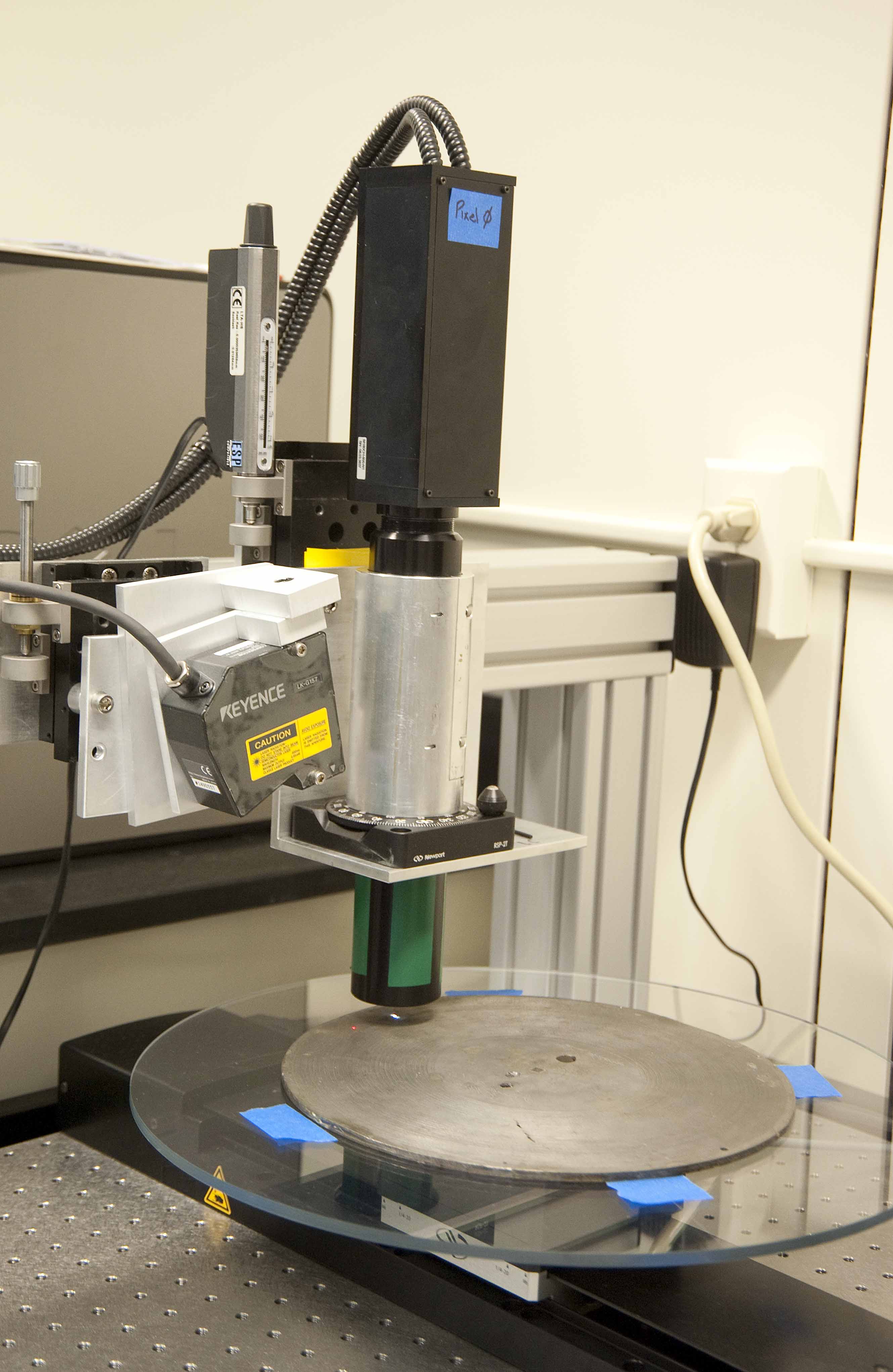The National Museum of American History has received a $488,000 grant from the Department of Interior, National Park Service (NPS) through the Save America’s Treasures (SAT) grant program, for conserving sound recordings from Alexander Graham Bell’s Washington, D.C., Volta Laboratory. Dating from 1881 to 1892, they are among the earliest recordings ever made.
This is one of 41 grants awarded this fall, totaling $12.6 million, given in collaboration with the National Endowment for the Arts, National Endowment for the Humanities and the Institute of Museum and Library Services. With Save America’s Treasures funds, organizations and agencies conserve significant U.S. cultural and historic treasures, which illustrate, interpret and are associated with the great events, ideas and individuals that contribute to the nation’s history and culture. The Alexander Graham Bell Foundation in Baddeck, Nova Scotia, Canada, has pledged matching funds.
The National Museum of American History, through an ongoing collaborative project with the Library of Congress and Lawrence Berkeley National Laboratory (Berkeley Lab), has recovered sound from 20 experimental Volta Laboratory recordings in 2011, 2013 and 2019, including the only documented recording of Bell’s voice. The earlier conservation work received funding from the Grammy Foundation, Smithsonian Women’s Committee and the Smithsonian Scholarly Studies program. The SAT grant will permit the continuation of this project, enabling the team to work with the museum’s collection of nearly 300 more experimental recordings from Bell’s laboratory and with additional Bell recordings in the collections at Parks Canada’s Alexander Graham Bell National Historic Site in Baddeck.
“Recovering sound from these recordings will be a major advance in the study of our sonic heritage,” said Carlene Stephens, curator at the museum. “This project allows us to revive sounds from recordings in two Bell collections and reunite the collections digitally. These sounds will enrich what we know about the earliest days of experiments with recorded sound and let us hear history.”
The noninvasive optical technique that scans and recovers sound was first conceived by Berkeley Lab in 2002 and jointly developed with assistance from the Library of Congress and other institutions over the past 15 years. The process creates a high-resolution digital map of a disc or cylinder. This map is then processed to remove evidence of wear or damage (e.g., scratches and skips). Finally, software calculates the motion of a stylus moving through the disc’s or cylinder’s grooves, reproducing the audio content and producing a standard digital sound file. For more information, visit www.irene.lbl.gov. For more information about the museum’s Bell collection, visit the online exhibition.
National Museum of American History
Through incomparable collections, rigorous research and dynamic public outreach, the National Museum of American History explores the infinite richness and complexity of American history. It helps people understand the past in order to make sense of the present and shape a more humane future. For more information, visit http://americanhistory.si.edu. The museum is located on Constitution Avenue, between 12th and 14th streets N.W., and is open daily from 10 a.m. to 5:30 p.m. (closed Dec. 25). Admission is free. For Smithsonian information, the public may call (202) 633-1000. Explore the museum’s social media on Twitter @amhistorymuseum, on Facebook at @National Museum of American History and on Instagram @amhistorymuseum.
Lawrence Berkeley National Laboratory
Founded in 1931 on the belief that the biggest scientific challenges are best addressed by teams, Berkeley Lab and its scientists have been recognized with 13 Nobel Prizes. Today, Berkeley Lab researchers develop sustainable energy and environmental solutions, create useful new materials, advance the frontiers of computing, and probe the mysteries of life, matter and the universe. Scientists from around the world rely on the lab’s facilities for their own discovery science. Berkeley Lab is a multiprogram national laboratory, managed by the University of California for the U.S. Department of Energy’s Office of Science.
Library of Congress
The Library of Congress is the world’s largest library, offering access to the creative record of the United States—and extensive materials from around the world—both on-site and online. It is the main research arm of the U.S. Congress and the home of the U.S. Copyright Office. Explore collections, reference services and other programs and plan a visit at loc.gov, access the official site for U.S. federal legislative information at congress.gov, and register creative works of authorship at copyright.gov.
Alexander Graham Bell Foundation
The Alexander Graham Bell Foundation is a nationally registered charity established to build and support the capacity of the community of Baddeck in Cape Breton and the province of Nova Scotia along with key partners such as the Bell Family Descendants and the Alexander Graham Bell National Historic Site in telling the story of Alexander Graham Bell and Mabel Bell—their legacy, contribution to the world and the learnings and impacts that continue to be relevant to society today.
Parks Canada’s Alexander Graham Bell National Historic Site
Alexander Graham Bell National Historic Site is a unique exhibit complex where original artifacts, the Silver Dart and HD4 replicas and hands-on experiences tell the story of the fascinating life and work of the famous inventor, Alexander Graham Bell. The site, which is home to the world’s largest collection of Bell artifacts, mementos, photos and models, is situated on 10 hectares of land overlooking Baddeck Bay and the Bell Estate, Beinn Bhreagh on the Bras d’Or Lakes in Baddeck, Nova Scotia, Canada.
Save America’s Treasures
For questions regarding the SAT grant program, or to comment on this or any other proposed SAT project, contact Megan Brown, chief of State, Tribal, Local, Plans & Grants Division, National Park Service, at 202-354-2062.
# # #

A close up of an emerald green disk with dark markings against a black background

A disc with an internal hole that is varying shades of grey and silver

A man sits in front of several monitors, studying them

A cylindrical vertical machine scans a metal disk lying on its side

A human hand points to a diagram on a computer monitor
